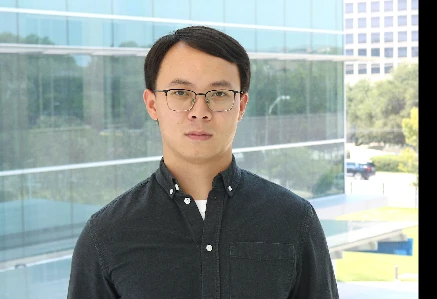351 - A Novel Fluorescence Lifetime Imaging Integrated with Optical Transparent Agents for Quantitative In Vivo Imaging
Presenter(s)

S. Gao1, L. Guo1, X. Xu1, C. Newman1, Z. Ou2, and K. K. H. Wang1; 1Biomedical Imaging and Radiation Technology Laboratory (BIRTLab), Department of Radiation Oncology, UT Southwestern Medical Center, Dallas, TX, 2School of Natural Sciences and Mathematics, The University of Texas at Dallas, Dallas, TX
Purpose/Objective(s): Fluorescence lifetime imaging (FLI) is a powerful tool for interrogating biological processes in cancer research. By measuring fluorescence lifetimes, FLI enables a more precise quantification between reporters compared to intensity-based fluorescence imaging (FI). This approach improves the detection of subtle shifts in metabolic activity, pH, and oxygenation within the tumor microenvironment – key parameters for early diagnosis, progression monitoring, and therapeutic response. Additionally, FLI retains the advantages of FI, providing high contrast and functional imaging for tumor localization and radiation guidance, making it a promising technique for preclinical radiation and cancer research. However, light scattering in tissues can significantly hinder detection accuracy when quantifying fluorescent reporters. To address this challenge, we propose a novel in vivo FLI integrated with optical transparency techniques using strongly absorbing dye (such as tartrazine), thereby improving the quantification of fluorescent reporters for cancer imaging.
Materials/Methods: Our FLI platform consists of a supercontinuum pulsed laser as the illumination source and a gated intensified charge-coupled device (ICCD) as the detector to capture time-gated fluorescence decays. The lifetime information is retrieved by fitting the decays to a mathematical model. The laser is directed to the desired region of interest on a tissue-mimicking phantom or the skin of a living animal, treated with a tartrazine solution to achieve optical transparency. First, we evaluated the system by measuring the lifetime of IRDye800CW solutions at concentrations ranging from 5 to 200 nM, embedded in 5 mm thick porcine muscle tissue that is either intact or treated with tartrazine. Additionally, we quantified the fluorescence yield ratio of 2 similar-emission fluorophores, AF750 and IRDye800, in both solutions and tartrazine-treated tissue, with ratios ranging from 0.1 to 1 compared to intensity-based results measured by our Fl system. For in vivo imaging quantification, we used IRDye800 and AF750 EGF to label U87-EGFR cells, at a 1:1 ratio for a total of 8 x 105 cells implanted either in mouse brains or subcutaneously. We topically applied tartrazine to the animal scalp and performed imaging for lifetime-based quantification.
Results: Our FLI system successfully recovered the fluorescence lifetime of IRDye800CW (0.42±0.10ns) in solutions. We expect the optical transparency provided by the absorbing dye can significantly enhance the accuracy of the retrieved lifetime results as well as the yield ratio of AF750 and IRDye800 in the phantom and in vivo scenarios.
Conclusion: We introduced a new imaging paradigm that can potentially enhance fluorescent target tracking in oncological processes by precisely quantifying the fluorescence yield ratios of various fluorophores, which is anticipated to provide quantitative imaging capability for cancer research.
